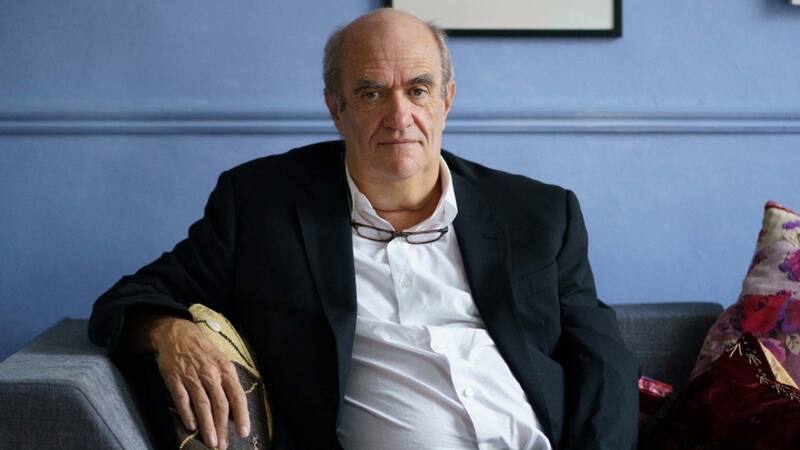You are viewing your 1 free article this month. Login to read more articles.
The dog that didn't bark
Last year - among a few other things - Simon & Schuster was purchased by Penguin Random House. Yet the inevitability of that result shouldn’t overshadow the months of speculation that preceded it. Simon & Schuster is one of the Big Five, and the names of potential buyers from NewsCorp to Netflix were floated by industry insiders and outsiders. Including one particular name, the biggest, baddest wolf of them all: Amazon.
Last year - among a few other things - Simon & Schuster was purchased by Penguin Random House. Yet the inevitability of that result shouldn’t overshadow the months of speculation that preceded it. Simon & Schuster is one of the Big Five, and the names of potential buyers from NewsCorp to Netflix were floated by industry insiders and outsiders. Including one particular name, the biggest, baddest wolf of them all: Amazon.
Speculating that Amazon might buy a publisher - one of the Big Five, no less - is one of publishing’s favourite parlour games. On one hand, it could represent the final nail in the coffin for traditional publishing: how could other publishers ever compete? Yet, on the other, there’s something reassuring about what such a sale might represent. It would give life to the industry’s secret hope that Amazon actually values publishing, or cares about books as something more than easily-shipped SKUs. Yet despite the rumours, Amazon hasn’t actually bought a big publisher. (India aside, but that’s a topic for another day.)
Certainly money is no barrier. Acquiring Simon & Schuster would be pocket money for Amazon, who are, in complex financial language, ‘making stupid money’. Simon & Schuster will change hands for a hefty $2.2 billion (pending regulatory approval). By contrast, Amazon now makes approximately twice that in profit every single quarter.
So why not buy Simon & Schuster?
Perhaps the best answer can be found by looking at what Amazon does buy. Take, for example, its expansion into the $150b gaming industry. Rather than buying studios, Amazon took over the infrastructure around games. By purchasing Twitch, for example, Amazon essentially purchased the gaming community wholesale. It is the primary platform on which games are reviewed, discussed, and recommended. Smaller acquisitions such as Curse and IGDB reinforce that approach. In essence, Amazon carved out a massive presence, but without the expense or risk of producing the content itself.
We can see a similar strategy at play with their purchase of Comixology. With the ubiquity of tablets, digital comics have become a major segment of the market. But rather than compete with, say Marvel and DC to create and publish its own comics, Amazon simply bought the marketplace outright, thereby elbowing its way into a percentage of every digital comic sold without ever having to pick up a pen.
Those are only a few of Amazon’s purchases, but we can see a trend start to form in what the company finds appealing.
First and foremost, Amazon snaffles up data relentlessly. Whether that’s Goodreads or Shelfari (or IMDB and Box Office Mojo, for that matter), their acquisitions show that they see value in obtaining vast swathes of analytical consumer insight. (Similarly, Twitch, Curse, Comixology all provide incredibly rich insight.) With these acquisitions, Amazon learns more and more about their audience.
Would adding a publisher like Simon & Schuster add any new insight into the market for traditional books? Simply put: no. The tragic fact is, Amazon has learned more about who buys, reads, reviews and recommends Simon & Schuster books in two decades than the publisher ever has known.
Amazon’s acquisitions also show that they’re also interested in smoothing the path to purchase.
Amazon is, ultimately, a retailer: the final click in a user’s journey. Their acquisitions primarily work to make that consumer journey more seamless. Whether a user is searching for something specific, browsing the category, or simply engaging in a topic of interest, Amazon makes sure there’s a clear and accessible pathway from initial discussion all the way through checkout
So adding a publisher brings Amazon no additional value here. Large publishers don’t sell direct to consumer, and rarely influence the user journey. Aside from the mandatory launch-time marketing and publicity push, few publishers interact with readers at all, instead leaving that to the ecosystem of third-party reviewers (now largely on Amazon) and retailers (also largely Amazon). Simon & Schuster provides Amazon with no additional paths to purchase; no recommendation engine; no community discussion. There’s nothing there that adds to what Amazon is already doing.
The most frequent argument for Amazon’s purchase of Simon & Schuster would be for the sheer volume of content: a century-old backlist of 30,000 titles, with an estimated 2,000 more publishing each year. The quality isn’t shabby either: the publisher’s new owner would inherit a stable of authors including perennial mega-sellers such as Stephen King and Dan Brown.
But keep in mind that Amazon is already a publisher. The largest in the world, in fact, by a substantial margin. According to Bowker, Amazon accounts for 92% of the self-publishing market - a market of well over a million new ISBNs every year. To put it in perspective: Amazon is already publishing more titles every day than Simon & Schuster does in a year. Why pay $2b for 30,000 titles when you’re already adding that number every two weeks for free?
And, continuing the pattern of ‘low-effort’ sector domination shown elsewhere. Amazon is not only the largest publisher in the world, they’re doing it without the effort of publishing. None of Amazon’s self-published books require that Amazon do any commissioning, editing, marketing, production, design, or even quality control. Simon & Schuster’s books may have significantly fewer typos, but Amazon has more than demonstrated that a substantial portion of the market simply doesn’t care enough about typos for Amazon to take an active interest in the issue.
Perhaps most importantly, Amazon already has the Simon & Schuster list. As the vastly dominant retailer in the bookselling space, they’re already taking their chunk of many - if not most - of Simon & Schuster’s sales. No matter who eventually purchased the publisher, Amazon’s continued take is guaranteed. In fact, if Penguin Random House want to spend their time and money making Simon & Schuster books more appealing, Amazon gains from their efforts. Why buy the cow when the milk comes free?
Although this is all rampant speculation - who truly knows the mind of the Bezos? - it highlights how Amazon has come to dominate publishing (as well as other genres of media). The most difficult, expensive and time-consuming task a media company has is in creating a saleable product out of an individual or a group’s creative work, be that a comic, a book, or a game. Amazon is content to leave that effort, and the risk it entails, to others. Instead, by acquiring the infrastructure supporting that effort - the community, the data, the insight, and the path to purchase - Amazon positions itself to share in the rewards. Perhaps what’s frightening or, indeed, embarrassing, is how little a major publisher had to add.
Jared Shurin is head of strategy at M&C Saatchi’s Social Impact Practice. He is also a reviewer, speaker and editor. His latest book is The Outcast Hours (with Mahvesh Murad, published by Solaris).














